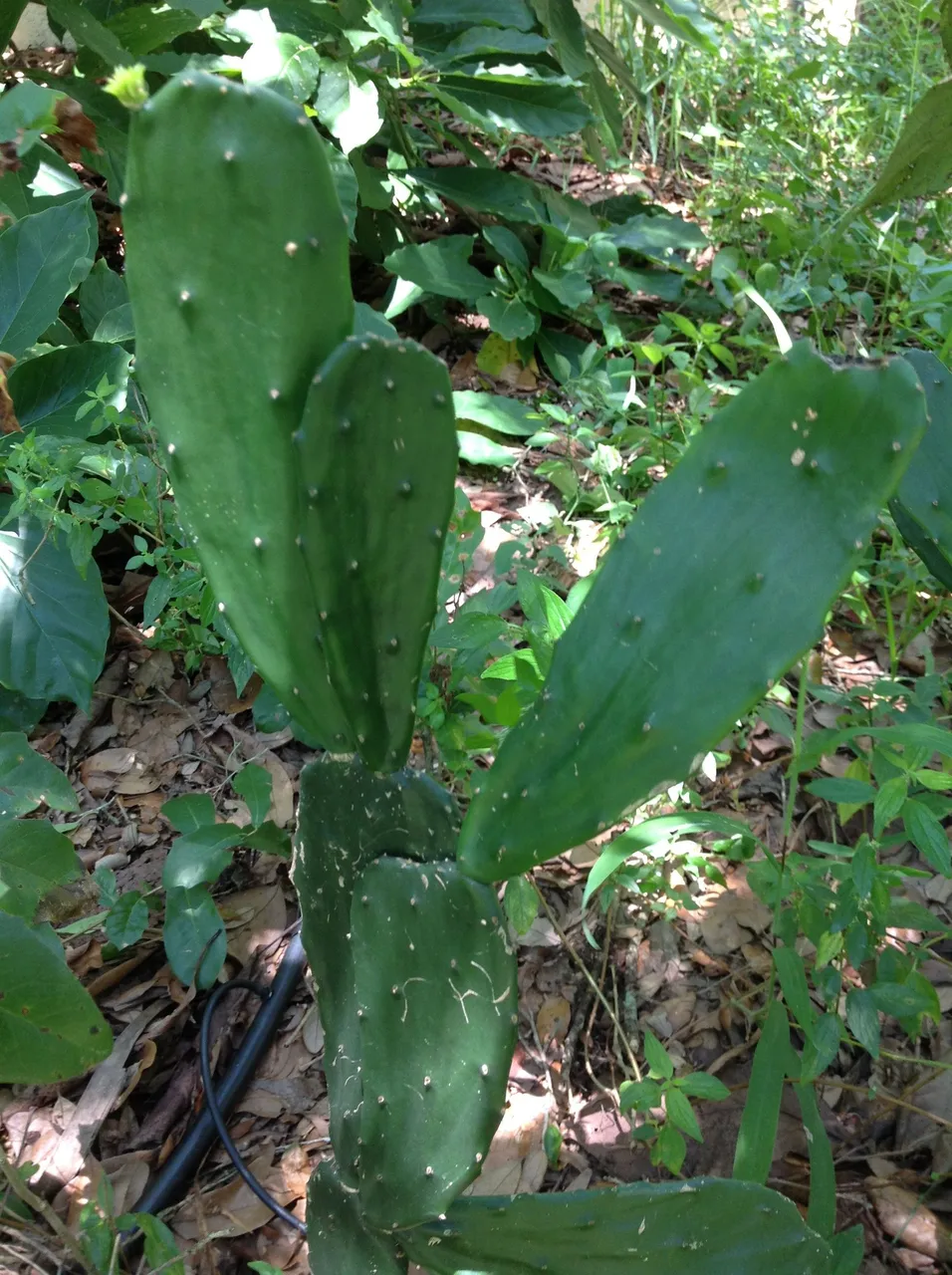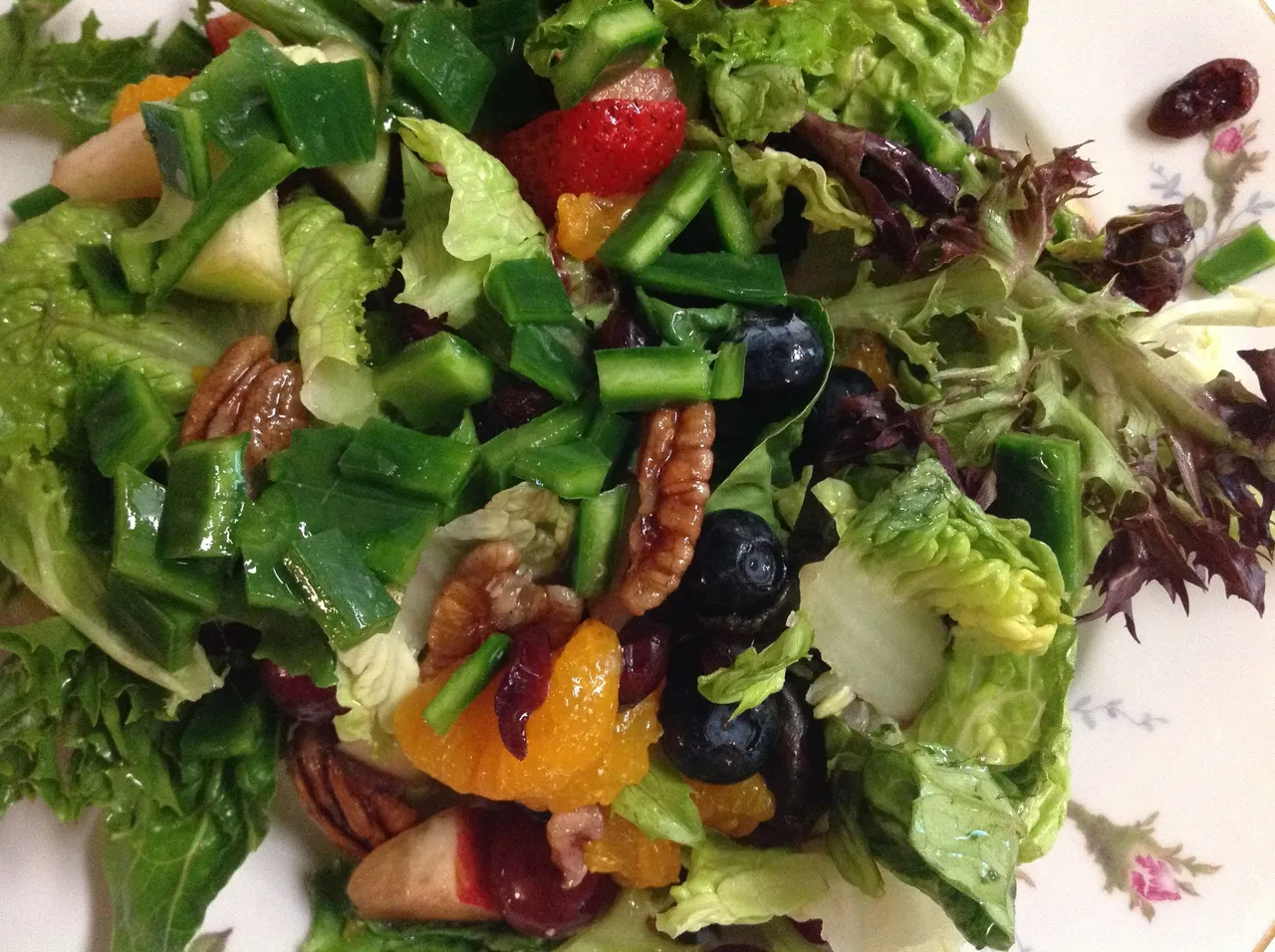
Nopal # 9 Opuntia cacti ~Edible raw or cooked. The nopal can be grown easily in any temperate zone and indoors in cold climates on a sunny porch. You just take one of the pads and stick it about an inch into the ground as it propagates extremely easily.
The nutrition is tops like most succulents and scores high in vitamin C and antioxidants! "It is also a good source of Riboflavin, Niacin, Vitamin B6, Iron and Copper, and a very good source of Dietary Fiber, Vitamin A, Vitamin K, Calcium, Magnesium, Potassium and Manganese."
Source for and more on nutrition here:
http://nutritiondata.self.com/facts/vegetables-and-vegetable-products/3029/2
Even though it looks harmless, you can still get tiny cactus fibers in your fingers so take a knife and skin like a cucumber on the edges and face.

My nopal shown here from my garden. Preparing it took about a minute or so.

I just added on top of a salad from the items in my organic co-op for this week. :)
Nopal gives a great crunchy texture to your salad or salsa. My husband gets them diced and skinned from the farmers market when he can find them available for sale. I love this as it saves me time and adds varied nutrition to our diet.
Well there we have it, another addition to our survival food list! Bon Appetit!
Images unless otherwise noted are original from @joearnold.
Other articles in this series if you would like to catch up!
https://steemit.com/homesteading/@joearnold/survival-food-series-8-eat-the-weed-s-flowers-and-roots-what-you-can-eat-from-your-own-backyard
Disclaimer: As with all edibles, you want to collect away from roadsides that might be covered in heavy metals or other contaminates. This is not intended to be medical or expert advice. Readers of this article and harvesters of all plants takes full responsibility for use of any plant and should use appropriate precautions in identification of any plant before ingesting.
Love and Peace,
Melissa